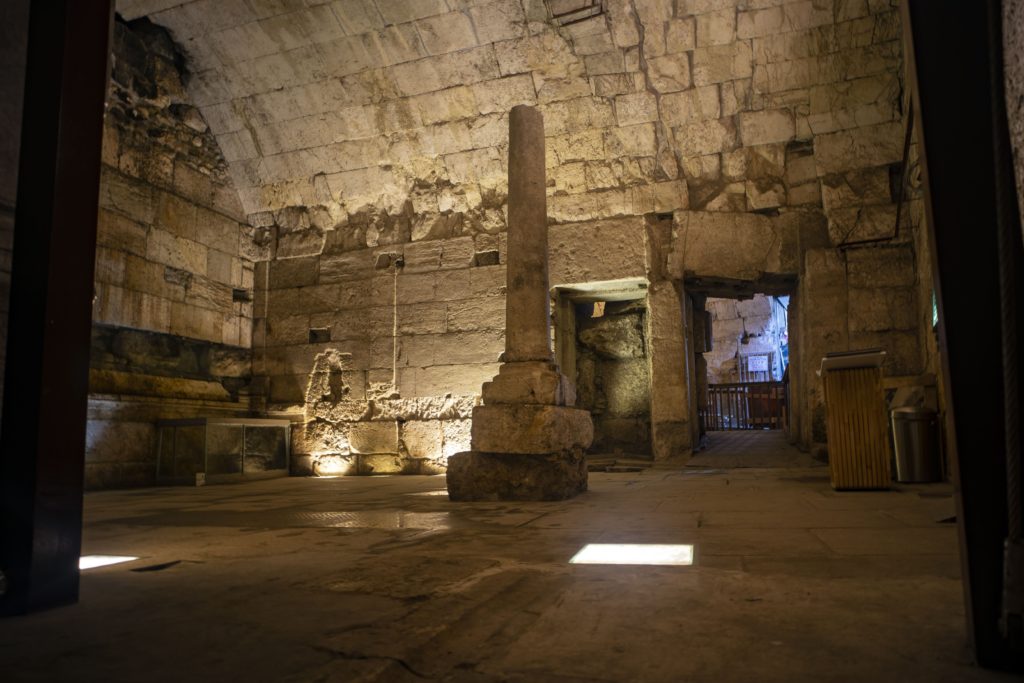
A room roughly 2,000-years-old and described as “magnificent” and opulent is being opened to the public in Jerusalem soon, just in time for the High Holy Day festivals. “This is without doubt one of the most magnificent public buildings from the Second Temple period that has ever been uncovered outside the Temple Mount walls in Jerusalem,” said Dr. Shlomit Weksler-Bdolach, excavation director on behalf of the Israel Antiquities Authority (IAA), in an IAA press release on the find.
While the building had been discovered first more than a century ago, Dr. Weksler-Bdolach noted that with its excavation now complete, visitors will be able to see the “opulence of the place.” The building is made of two chambers that she said acted as “ornate reception rooms” and included a “magnificent fountain with water gushing out from lead pipes,” and Corinthian-style capitals. She said the structure “may even have been the city council building where important dignitaries were received” before they entered the Second Temple compound.
While the Second Temple is most famous for its religious significance as the center of worship for Israel millennia ago, it was also a remarkable structure enhanced significantly by Herod the Great. The great compound was destroyed by Roman soldiers in 70 CE—a tragedy marked annually by the Jewish people during the summer months. That makes the latest archaeological event’s timing even more special.
“It is exciting to reveal such a magnificent structure from the Second Temple period while we mourn the destruction of Jerusalem and pray for its restoration,” the press release quoted Chairman of the Western Wall Heritage Foundation Mordechai Soli Eliav as saying. “These chambers are part of a new walk through the Western Wall Tunnels, where visitors will view fascinating finds and walk for the first time along the entire route among Second Temple-period remains that illustrate the complexity of Jewish life in Jerusalem between the Hasmonean and the Roman periods.”
That complexity can even be seen in the building’s varied uses throughout its history. Dr. Weksler-Bdolach said the facility was used as a dining space that archaeologists believe contained reclining sofas, but then later after the facility was converted into three chambers, one was used as a ritual bath. In other words, the compound both dined VIPs and later enabled visitors to purify themselves for a holy experience.
In addition to teaching visitors more about the building itself, the addition will also expand the experience in the Western Wall Tunnels—an underground archaeological site open to the public that shows roads and structures dating to the Second Temple-era (516 BCE – 70 CE).
“The new route provides a better understanding of the complex and important site known as the Western Wall Tunnels, while emphasizing the extent of this magnificent building,” Shachar Puni, architect for the Israel Antiquities Authority’s Conservation Department said in the press release. “…By making the route accessible and opening it to the public, visitors are introduced to one of the most fascinating and impressive sites in the Old City of Jerusalem.”
(By Joshua Spurlock, www.themideastupdate.com, July 11, 2021)
